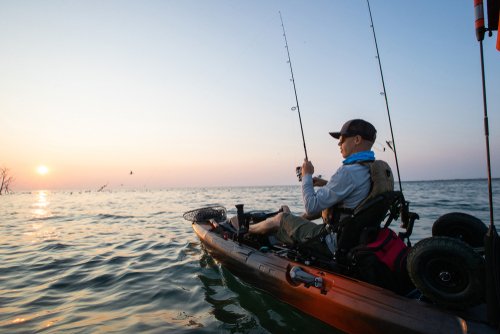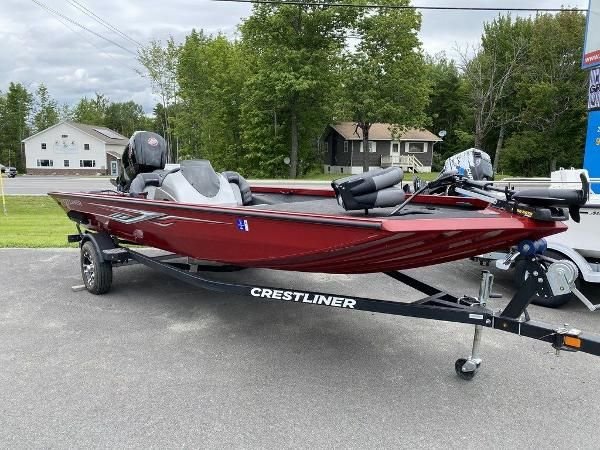Your fishing line serves as your direct connection between yourself and the fish. It transmits subtle bites from wary bass while providing enough strength to handle their vigorous fights. So what is the best fishing line for bass?

Choosing the right fishing line cannot be overstated. The right line maximizes your ability to cast accurately, detect strikes promptly, withstand aggressive behavior from battling fish, and resist sharp objects underwater. All while maintaining optimal sensitivity to feel even faint nibbles.
This article will explore the various fishing lines available for bass fishing, delve into their unique characteristics and benefits, and guide you in selecting the best line for specific scenarios. Whether you prefer monofilament, fluorocarbon, or braided lines, we will help you navigate through the extensive options to find the perfect line that suits your angling style and preferences.
Fishing Line Types
Monofilament Fishing Line
Monofilament fishing lines are widely recognized for their versatility and widespread use among bass anglers. Composed of a single strand of nylon or other polymers, monofilament lines offer several key characteristics that make them popular.
Firstly, their buoyancy allows for better control over bait presentation, especially when using topwater lures. Additionally, monofilament lines have a degree of stretch that makes them more forgiving when fighting strong-willed bass, reducing the likelihood of losing the fish during intense battles.
Furthermore, their abrasion resistance and knot strength ensure reliability in various fishing conditions. Notable brands such as Berkley Trilene, Stren Original, and Seaguar Red Label provide high-quality monofilament options tailored to the needs of bass anglers.
Fluorocarbon Fishing Line
Fluorocarbon fishing lines have gained significant popularity in recent years due to their remarkable stealthiness underwater. Composed of fluoropolymer materials that closely resemble water’s refractive index, fluorocarbon lines become virtually invisible underwater. This property makes them particularly advantageous in clear water situations where line visibility can easily spook bass.
Moreover, fluorocarbon has a higher density than water, resulting in improved sensitivity and enhanced bite detection capabilities—an essential aspect when targeting finicky bass species known for subtle strikes. Prominent manufacturers such as Sunline FC Sniper, Seaguar Invizx, and P-Line Tactical offer reliable fluorocarbon options that are highly regarded within the bass-angling community.
Braided Fishing Line
Braided fishing lines are constructed by interweaving multiple strands of synthetic fibers such as Spectra or Dyneema together—a design that grants them immense strength while maintaining a small diameter relative to their breaking strength. This characteristic makes braided lines highly desirable for bass anglers fishing in heavy cover, with a heightened risk of line breakage due to abrasive objects.
The lack of stretch in braided lines allows for optimal hook sets and increased sensitivity, ensuring that even the slightest nibble is detected. Additionally, their high visibility can be advantageous when fishing in stained or muddy water conditions.
Top-notch brands like PowerPro Super Slick, Daiwa J-Braid, and SpiderWire Stealth have earned a reputation for producing reliable braided lines tailored specifically to meet the demands of bass anglers. By understanding the composition, characteristics, and benefits of each fishing line type—monofilament, fluorocarbon, and braided—you can decide when to select the best fishing line for your bass angling pursuits.
Each line type has unique advantages that cater to specific scenarios encountered on the water. Whether you prefer monofilament’s versatility, fluorocarbon’s stealthy nature, or braided’s unparalleled strength, notable brands within these categories offer quality options well-regarded among bass anglers worldwide.
Strength and Durability
The Backbone of Bass Fishing
When it comes to bass fishing, having a fishing line with sufficient strength is paramount. Bass are notorious fighters known for their aggressive strikes and powerful runs.
Choosing a line with adequate strength ensures you can handle these formidable adversaries without worrying about line breakage. A stronger line will provide the backbone to withstand the sudden bursts of energy exhibited by bass during the fight.
Additionally, it is crucial to consider factors that affect line durability. Abrasion resistance is significant in preventing your fishing line from getting damaged by rocks, logs, or other underwater structures commonly found where bass inhabit.
Opting for a line with high abrasion resistance will ensure it can endure the harsh conditions often encountered while targeting bass. Another factor that affects line durability is ultraviolet (UV) protection.
Some lines may degrade and weaken when exposed to sunlight over time due to UV radiation. Selecting a fishing line with built-in UV protection will help extend its lifespan and maintain its optimal performance.
Sensitivity
Unlocking the Secrets of Finicky Bass
Sensitivity is key when targeting finicky bass that subtly taps or nips at your bait before committing fully. The ability to detect these delicate bites can make all the difference in hooking more fish.
Choosing a highly sensitive fishing line allows you to feel even the slightest movements or changes in tension transmitted through your rod. Low-stretch lines play a vital role in enhancing sensitivity.
Unlike traditional monofilament lines with significant stretch when under tension, low-stretch lines have minimal give. This lack of stretch increases sensitivity as slight movements are immediately transmitted from your bait to your hands through the rod tip.
With increased sensitivity provided by low-stretch lines, anglers gain an advantage in detecting those subtle bites that other lines may miss. This heightened ability to sense the behavior of finicky bass can greatly improve your success rate on the water.
Visibility
Weighing the Pros and Cons
The visibility of your fishing line is a crucial consideration when targeting bass. Highly visible lines can be advantageous in certain situations, such as when fishing in murky or stained water.
The high visibility allows you to track the movement of your line and detect subtle line twitches that indicate a bite. However, there are also scenarios where low-visibility lines have their advantages.
In clear water or when targeting heavily pressured bass, using a low-visibility line becomes vital to prevent spooking fish with overly visible lines. Bass can become more suspicious and wary in these conditions, making it essential to minimize any unnatural elements that could deter them from striking.
To balance visibility and performance, anglers can employ strategies such as adding leader material to their mainline or selecting lines designed with camouflage patterns. These approaches help minimize the visibility of the mainline while maintaining its functionality and performance characteristics required for bass fishing.
Diameter and Casting Distance
The Equation for Success
There is an intricate relationship between line diameter and casting distance in bass fishing. Thinner diameter lines offer less resistance through the air during casting, allowing for increased distance covered by your lure or bait.
This advantage becomes particularly important when efficiently targeting distant structures or covering larger water areas. However, balancing diameter and other essential factors like strength, durability, sensitivity, and visibility is crucial.
As line diameter decreases, its strength may be compromised since thinner lines tend to have lower pound test ratings. Therefore, selecting a fishing line that maintains an appropriate balance between these attributes according to your specific fishing needs is imperative.
Considerations like target species size, fishing environment, and preferred fishing technique will all influence the optimal line diameter for bass fishing. A thorough understanding of these factors and their interplay is crucial to ensure success on the water.
Fishing Line Color
Regarding bass fishing, the choice of fishing line color can make a difference in your success on the water. While no one-size-fits-all answer exists, certain colors work better in specific conditions. Using clear or low-visibility lines such as green or smoke in clear water is advisable. These lines are less likely to spook wary bass. In stained or murky water, darker colors like black or high-visibility lines like chartreuse can help attract attention and increase strike rates. Experimenting with different colors and observing their effectiveness in different environments will help you determine what works best.
2. Line Conditioners and Treatments: To maximize the performance and longevity of your fishing line, using line conditioners and treatments can prove beneficial. These products are designed to reduce friction, improve casting distance, enhance sensitivity, and increase durability by protecting against UV damage and reducing line memory issues. Silicone-based lubricants are commonly used as line conditioners, while specialized treatments offer additional benefits such as increasing abrasion resistance or reducing water absorption for consistent performance in various conditions.
Conclusion
Choosing the best fishing line for bass is a crucial decision that directly impacts your angling success. By understanding the characteristics of different types of fishing lines – monofilament, fluorocarbon, and braided – along with considering factors like strength, sensitivity, visibility, diameter, casting distance, color choices, and utilizing line conditioners/treatments when necessary – you can make an informed decision tailored to your specific needs on the water. Remember that selecting the right fishing line is just one aspect of successful bass fishing; technique and presentation also play vital roles in enticing these elusive predators into biting scenarios.
With this knowledge and an adventurous spirit to explore different fishing line options, you’ll be well-equipped to confidently pursue bass and increase your chances of a triumphant day on the water. Happy fishing!






